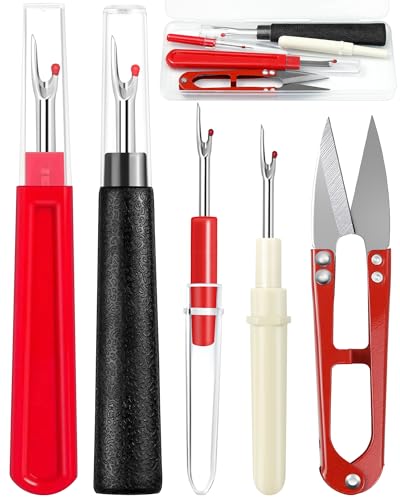Ever wondered if sewing an apron is more than just a crafty pastime? You might be surprised to learn that it can actually be considered a change of state. When you take a piece of fabric and transform it into a functional apron, you’re not just altering its shape; you’re giving it a whole new purpose and identity.
Understanding the Concept: Is Sewing an Apron a Change of State?
Defining “Change of State”
In science, a “change of state” refers to a material transformation from one form to another, such as from solid to liquid. This involves physical changes at a molecular level. Common examples include ice melting into water or water evaporating into steam. These transformations are usually reversible and don’t alter the material’s chemical composition.
Sewing as a Physical Process
In sewing, you alter a fabric through cutting, stitching, and assembling, but this doesn’t change the fabric’s molecular structure. Instead, it changes its shape and function. When you sew an apron, you’re taking a flat piece of fabric and creating a three-dimensional, functional item. This involves a physical process altering the fabric’s form without changing its fundamental properties. While sewing transforms the material’s practical use, it remains a physical rather than a chemical change.
Analyzing the Apron Sewing Project
Sewing an apron brings a practical purpose to fabric, transforming it into a functional piece. By manipulating the fabric, you’re engaging in a process that changes its state from flat and unshaped to a three-dimensional object.
Materials Required for Sewing an Apron
Selecting high-quality materials ensures the apron is durable and functional. Essential materials include:
- Fabric: Cotton or polyester, typically 1-2 yards depending on apron size.
- Thread: Polyester or cotton thread matching fabric color.
- Needles: Universal or sharp needles for sewing machines.
- Sewing Machine: Optional but speeds up the process.
- Scissors: Fabric scissors for precise cuts.
- Measuring Tools: Measuring tape and ruler for accuracy.
- Pins/Clips: Hold fabric pieces in place while sewing.
- Patterns: Paper patterns or template for cutting fabric.
Steps Involved in Sewing an Apron
Follow these steps for a smooth apron sewing experience:
- Cut Fabric: Use patterns or templates to cut fabric pieces. Include main body, straps, and pockets.
- Prepare Pieces: Iron fabric pieces, ensuring they’re wrinkle-free for accurate stitching.
- Sew Straps: Fold strap fabric in half, stitch along the edge, and turn inside out. Topstitch for reinforcement.
- Attach Pockets: Place pockets on the main body, pin edges, and sew securely.
- Assemble Apron: Align straps and main body, pin together, ensuring straps sit correctly. Sew straps to the apron body.
- Hem Edges: Fold outer edges twice, pin, and sew to create a clean, finished look.
- Finish Seams: Inspect seams, clip any loose threads, and press the entire apron for a neat finish.
These steps leverage fundamental sewing techniques, illustrating that the process of crafting an apron is indeed a change of state, transforming fabric into a useful garment.
Theoretical Insights
Sewing an apron involves reconfiguring materials, raising interesting questions about its status as a change of state.
Comparisons with Other Changes of State
In traditional science, a change of state involves physical transformations—like water freezing to ice or vaporizing. Here, you apply similar logic. When sewing an apron, you alter fabric through cutting, stitching, and assembling, transforming it from a flat piece into a structured garment. Unlike chemical changes, this alteration doesn’t modify the material’s chemical composition, yet it achieves a functional metamorphosis.
For example, melting metal to mold into tools or 3D printing materials into specific shapes parallels sewing, as both processes redress existing materials into practical forms without chemical alteration. In each case, the original material remains the same at a molecular level, yet it serves a new function through skillful manipulation.
Insights from Textile Science
Textile science further elucidates the transformation involved in sewing an apron. Fabrics possess inherent properties like weave, weight, and durability that you harness and modify through sewing techniques. By cutting fabric into precise shapes and securely stitching seams, you create structural integrity in the apron.
In textile science, the mechanical manipulation—such as tensile strength tests or dyeing processes—exemplifies how physical changes yield practical outcomes. When you sew, you adopt similar principles, engaging in a detailed process that leverages the fabric’s properties for utility, durability, and fit.
Thus, sewing an apron exemplifies a transformation deeply rooted in physical manipulation, akin to other recognized changes of state in material science.
Practical Applications of Sewing
Sewing offers numerous practical applications that extend beyond the fabric’s initial transformation. When you sew an apron, you’re engaging in an activity that’s both functional and transformative.

Skills Development Through Sewing
Sewing develops various skills that can be applied in different contexts. For instance, hand-eye coordination improves through tasks like threading a needle. Precision increases as you measure and cut fabric to exact specifications. Problem-solving skills are honed when you encounter and fix sewing errors.
Accurate measurement, cutting, and stitching techniques enhance fine motor skills. Over time, these skills contribute to a deeper understanding of fabric behavior and garment construction.
Creative and Therapeutic Benefits
Sewing provides creative outlets and therapeutic benefits. Creativity flourishes as you choose patterns, fabrics, and embellishments, making each apron unique. You can experiment with colors, textures, and designs, allowing for an endless array of personalized creations.
Sewing also offers therapeutic advantages. The repetitive motions can be meditative, reducing stress and promoting mindfulness. Focus required in sewing can foster a sense of accomplishment, contributing to mental well-being. The satisfaction from creating a tangible product like an apron enhances self-esteem and provides a mental boost.
Conclusion
Sewing an apron truly embodies a change of state, transforming simple fabric into a functional, creative piece. It’s not just about the end product but the journey—developing valuable skills and experiencing the joys of creativity and mindfulness. So next time you pick up a needle and thread, remember you’re not just sewing; you’re engaging in a process that enriches both your mind and your craft. Happy sewing!

















